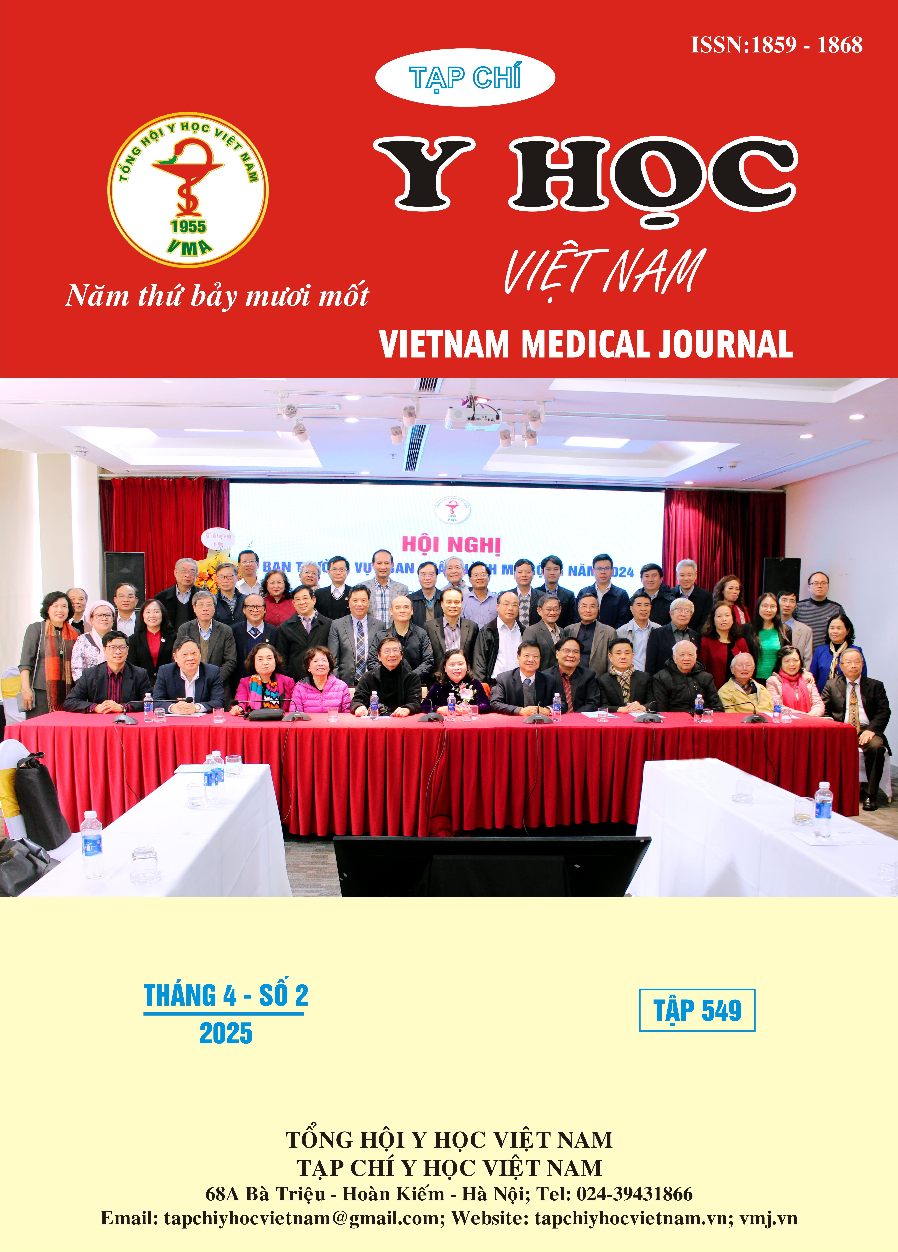PREDICTIVE VALUE OF AGE SHOCK INDEX IN MORTALITY RISK STRATIFICATION IN HEMODYNAMICALLY STABLE PATIENTS WITH ACUTE PULMONARY EMBOLISM
Main Article Content
Abstract
Background: Acute pulmonary embolism (PE) is a common disease in the world and the mortality rate is still high. The world has a growing trend of active intervention in hemodynamically stable patients, so age shock index (ASI), with high sensitivity to the early stage of shock, can contribute to risk stratification in hemodynamically stable patients with PE. Objective: Determine AUC, the optimal cut-off point for ASI to predict mortality in hemodynamically stable patients with PE. Patients and methods: A retrospective cross-sectional study with analysis of 147 hemodynamically stable PE patients. Results: The average age of the study population is 63.09±1.50 years old with female ratio 1.94 times higher than male. The mortality rate in hemodynamically stable patients with PE is 12.9%. Mortality risk factors are heart rate (OR=1.03; 95%CI: 1.00 – 1.06; p=0.042), shock index (OR=8.88; 95%CI: 1.00 – 78.68; p=0.049), and ASI (OR=1.03; 95%CI: 1.01 – 1.06; p=0.007). ASI model is a good prediction tool for predicting short-term mortality risk with AUC = 0.731 (95%CI: 0.624 – 0.839, p=0.001), the optimal cut-off point is 72.0, sensitivity is 63.2%, specificity is 79.7%, PPV is 31.6%, and NPV is 93.6%. Conclusion: ASI, is a good prediction tool for predicting short-term mortality risk, with its simplicity, and ease of clinical application will support to the ESC risk stratification tool and reduce the application gap of PESI and sPESI.
Article Details
Keywords
pulmonary embolism, shock index, age shock index
References
2. Bùi Hữu Minh Khuê, Đặc điểm điều trị tiêu sợi huyết và kết cục nội viện ở bệnh nhân thuyên tắc phổi nguy cơ trung bình – cao, Luận văn Thạc sĩ Y học - Đại học Y Dược TP. Hồ Chí Minh, 2023, tr. 1-86.
3. Hobohm L., et al, Definition of tachycardia for risk stratification of pulmonary embolism, Eur J Intern Med, 2020, 82, pp. 76-82.
4. Kemal Gokcek, et al, In-hospital mortality of acute pulmonary embolism: Predictive valueof shock index, modified shock index, and age shock index scores, Med Clin (Barc), 2022, 158(8), pp. 351-355.
5. Ozsu S, et al, Classification of high-risk with cardiac troponin and shock index in normotensive patients with pulmonary embolism, J Thromb Thrombolysis, 2018, 43 (2), pp. 179-183
6. Sanchez O., et al, Reduced-Dose Intravenous Thrombolysis for Acute Intermediate-High-risk Pulmonary Embolism: Rationale and Design of the Pulmonary Embolism International THrOmbolysis (PEITHO)-3 trial, Thromb Haemost, 2022, 122 (5), pp. 857-866.
7. Valiente Fernandez M, et al, Shock Index and Physiological Stress Index for reestratifying patients with intermediate-high risk pulmonary embolism, Med Intensiva (Engl Ed), 2024, 48 (6), pp. 309-316.
8. Yu T., et al, Age Shock Index is Superior to Shock Index and Modified Shock Index for Predicting Long-Term Prognosis in Acute Myocardial Infarction, Shock, 2017, 48 (5), pp. 545-550.


